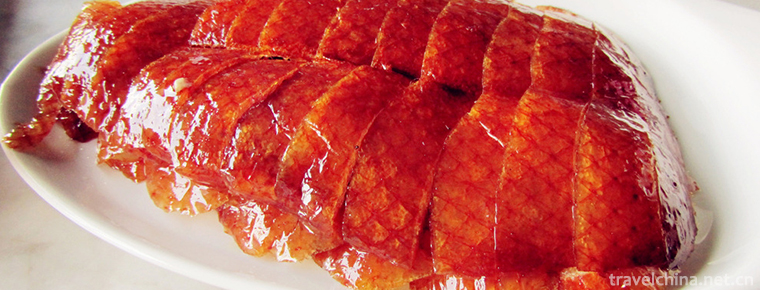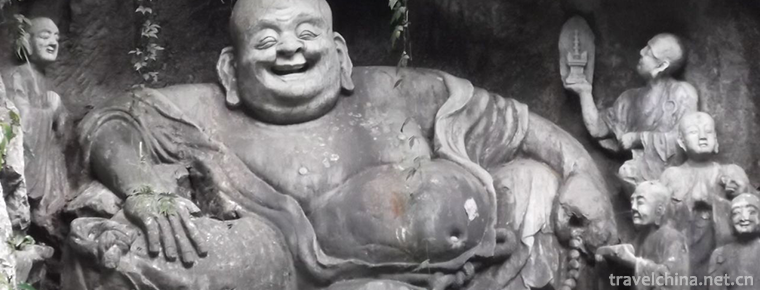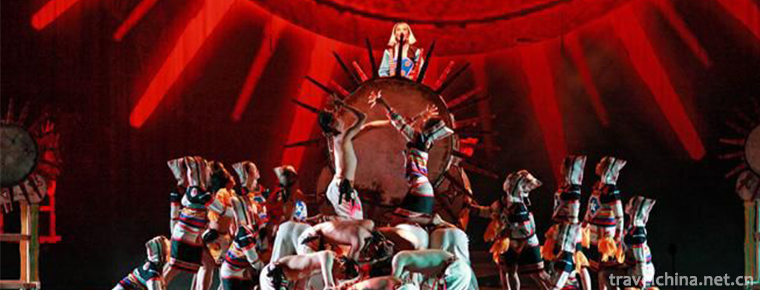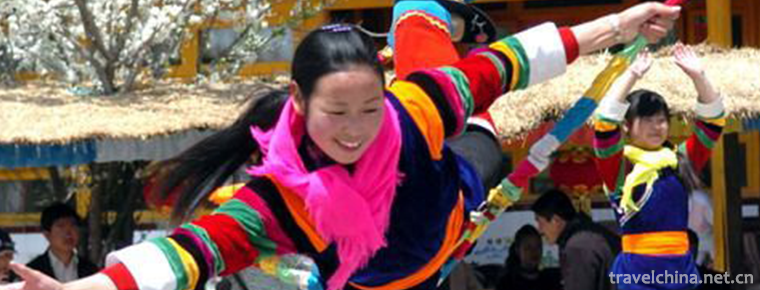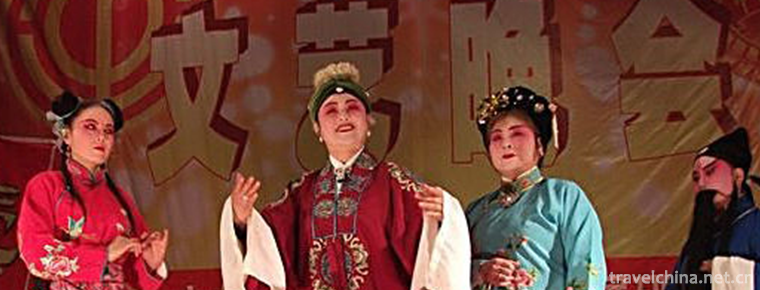Shaoxing opera
Shaoxing opera
Shao Opera, a traditional Chinese opera. Originally known as "Shaoxing Chaotian Bomb", commonly known as "Shaoxing Daban", it originated from Qin Opera and was named Shaoxing Opera in 1950.
Shao Opera originated in Shangyu County, Shaoxing City, Zhejiang Province (now Shangyu District), and is popular in Shaoxing, Cixi, Yuyao, Xiaoshan and other areas of Zhejiang and Shanghai.
Shao Opera is one of the three major operas in Zhejiang Province. It has a history of more than 300 years and has more than 400 operas. The most representative operas are Monkey King's Three Strikes of White Bones, Dragon-Tiger Fighting and so on.
Shaoxing Opera is a Shaoxing local drama with the basic tunes of "357" and "Erfan". It has formed its own unique artistic style with its high-spirited singing, rough and simple music, bold and unrestrained performance and the combination of culture and military.
On June 7, 2008, Shao Opera was approved by the State Council to be included in the Second National List of Intangible Cultural Heritage.
Historical Evolution
During the Jiajing period of Ming Dynasty, Qin Opera spread from the north to Shaoxing, Zhejiang Province. It merged with Yuyao Opera and gradually formed a new kind of exciting tune, called "tune". The most striking one was "Erfan". The tune and Qin Opera were composed by Taoist priests and hall-name classes. One person sang many roles, accompanied by gongs, drums and cymbals. After moving to the stage, it is called "Shaoxing High-profile Class".
In the late Ming and early Qing Dynasties, Kun Opera prevailed, and then indiscriminate bullets were introduced. High-profile classes jointly sang Kun Opera and indiscriminate bullets, forming a three-in-one class.
During the reign of Qianlong in the Qing Dynasty (1723-1735), it began to prevail.
During the years of Xianfeng and Tongzhi, Gaoqiang and Kunqiang gradually lost the support of the audience. Especially in the countryside, random play was popular, so the artists changed to random play, called Shaoxing random play class.
At the end of the Qing Dynasty and the beginning of the Republic of China, Shao Opera began to enter Shanghai. Influenced by the Beijing Opera Troupe, cosmetics and stage furnishings have been improved. Soft and hard scenes and spotlights have been set on the stage, and make-up tends to be meticulous.
In the 1930s, when Nvdan appeared on the stage, the costumes and headdresses became more and more beautiful and exquisite, and the dress became more and more standard.
From the 1930s to the 1940s, setting techniques were introduced from other operas, which prevailed in organ setting.
After the founding of the People's Republic of China, stage art design began according to the plot.
In 1950, Shaoxing Chaotian Bomb was officially named Shaoxing Opera.
In the early days of the founding of the People's Republic, there were nine professional folk troupes, such as Tongchun, Tongxing and Xinmin. After registration and amalgamation, the number of Shaoxing Opera has decreased slightly, but due to the recruitment of new trainees, several training courses have been held, and successors have been trained, which has made Shaoxing Opera develop greatly.
In 1956, Tongchunshao Opera Troupe was changed to Zhejiang Shao Opera Troupe. There were six professional Shao Opera Troupes in 1965. Shaoxing Opera was devastated in the "Cultural Revolution" and revived after the crushing of the Gang of Four.
Since the 1980s, chemical materials have gradually replaced cotton cloth and wood to make scenery and props, and other operas have been used for stage art reform, but the characteristics of Shaoxing Opera have been maintained throughout the reform.
By 1982, there were three professional Shaoxing Opera Troupes in Zhejiang Province, Shaoxing County and Xiaoshan County, and one Shaoxing Opera Training Course.
After the founding of the People's Republic of China, many traditional plays were reorganized and a large number of modern and historical plays were created. Traditional dramas such as Dragon and Tiger Fighting, Hou Zhu Sha, Flame Mountain, Luhua Ji, Xiangluo Belt, Sun Wukong's Three Pairs of White Bone Essence, etc. were reorganized and adapted. Modern dramas such as "Blood and Tears" and "Ah Q Zheng Zhuan" and historical dramas such as "Yu Qian" were compiled. Among them, "Luhua Ji" won the prize in 1954 East China Opera Concert; Yu Qian was awarded the first prize in performance and the second prize in script by the Ministry of Culture in 1979; and "Monkey King's Three Pairs of White Bone Essence" was produced by Tianma Film Studio in 1960.
Current status of protection
In order to protect and better develop Shaoxing Opera art in time, Zhejiang Shaoxing Opera Troupe, centering on the goal of prospering Shaoxing Opera cause, has set up an implementing organization of Shaoxing Opera Protection and Development Project, headed by the head of the troupe, and has engaged many old artists as consultants. It has set up working groups on traditional repertoire rehearsal, audio-visual work and traditional repertoire arrangement, which are gradual, long-term and solid. Shi Shao Opera Protection and Development Project. One is the repetition of traditional Shaoxing Opera. Through the efforts of the whole group in the next few months, the traditional Shaoxing Opera operas Guo Yanwei and Lu Wenlong have been carefully rehearsed in the Shaoxing Opera Art Center. The second is to collect and sort out excellent traditional plays. Xue Gang's Anti-Tang Dynasty, Huang Feihu's Anti-Five Passes, Tianyuan Ball, Lu Wenlong, Dragon and Phoenix Lock have been collected and sorted out. The third is to implement the pre-work of "audio-visual". The troupe has set up a special "Audio and Video" work office, which employs veteran artists as consultants. Specialists will go to Zhejiang People's Radio Station for door-to-door collection and social collection. They will begin collecting and collating Shaoxing Opera recordings and records from the 1930s to the end of the 1960s, as well as technical processing of the original sound. Fourth, polishing the newly compiled modern Shao Opera. In order to participate in the 10th Zhejiang Drama Festival, which will be held in December, Zhejiang Shao Opera Troupe fully mobilized the main creators and performers of Qiujin to elaborately process, polish and upgrade Qiujin, constantly enriching the spiritual and ideological connotation, passionately creating and performing excellent works of Shao Opera, and striving to sprint for the awards of the Drama Festival.
According to Zhu Yan, the head of Zhejiang Shao Opera Troupe, they plan to launch at least two traditional dramas each year, aiming at at at least 3-4 sets. Besides Guo Yanwei, they will also launch a traditional drama Lu Wenlong, which will be rehearsed on November 5. The performers of "Lu Wenlong" are all performed by Xiao Baihua performing troupe of Shaoxing Opera, who just graduated in the second half of the year. Their ages are only 16-20 years old. Zhu Yan said that they will further intensify their efforts to excavate and organize and consolidate the repertoire results already rehearsed. In 2-3 years, they will increase the number of excellent traditional repertoires that can often be performed on Shaoxing Opera stage to 30.
Troupe
Zhejiang Shao Opera Art Research Institute is the former Zhejiang Shao Opera Troupe. The troupe was founded in 1956 (its predecessor was Shanghai Tongchun Stage founded in 1926). In 1950, Tongchun Stage was renamed Tongchun Shao Opera Troupe. It returned to Shaoxing from Shanghai in 1953. In 1956, it was transformed into a state-owned troupe, namely Zhejiang Shao Opera Troupe. Zhejiang Shao Theatre was founded in 1984. The former Zhejiang Shao Opera Troupe was a group and the Shaoxing Shao Opera Troupe was a group. In 1992, it was withdrawn and merged. In August 2012, with the approval of Zhejiang Cultural Department and Shaoxing Editorial Committee, Zhejiang Shao Opera Troupe was cancelled and Zhejiang Shao Opera Art Research Institute was established to undertake the protection, research, inheritance and development of national intangible cultural heritage Shao Opera.
Hangzhou Xiaoshan Shao Opera Art Center (formerly Hangzhou Xiaoshan Shao Opera Troupe) was established in 1961 and is one of the only two professional Shao Opera art units in China.

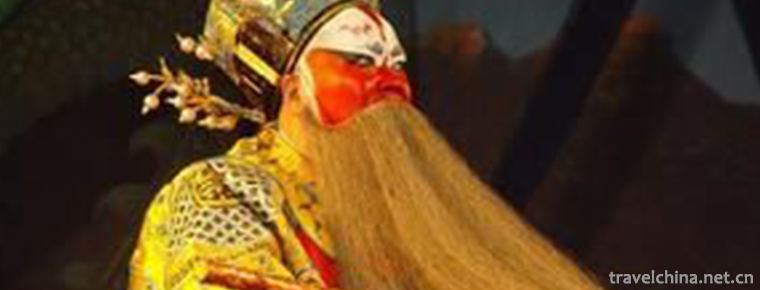
-
Cantonese crispy fried pork
Crispy fried pork is a traditional dish with color, aroma and taste. It belongs to Guangdong cuisine department. This dish is one of the classic Cantonese cured wax.
Views: 201 Time 2018-11-02 -
Little Three Gorges
Wushan Xiaoxiao Three Gorges is the general name of Changtan Gorge, Qinwang Gorge and Sanzhuang Gorge on Madu River, a tributary of Dicuixia of Daning River. Wushan Xiaoxiao Three Gorges is known as t.
Views: 190 Time 2019-02-25 -
The Legend of the Cloth Bag Monk
From the end of Tang Dynasty to the Five Dynasties, the monk of Fenghua, Ningbo City, Zhejiang Province, named Tingzi, was an eminent monk of Hou Liang in the Five Dynasties.
Views: 382 Time 2019-04-04 -
Gino Encouragement
Great encouragement, traditional dance in Jinghong City, Yunnan Province, is one of the national intangible cultural heritage..
Views: 263 Time 2019-05-05 -
Gold and Silver Fine Craft
Gold and silver fine craftsmanship, Huangpu District of Shanghai, Nanjing City of Jiangsu, Jiangdu traditional handicraft, one of the national intangible cultural heritage..
Views: 207 Time 2019-05-07 -
Construction Techniques of Hakka Tulou
Hakka Tulou building construction technology, Fujian Longyan City Nanjing County, Huaan County local traditional building construction technology, one of the national intangible cultural heritage..
Views: 139 Time 2019-05-09 -
Nanyin Rap
Nanyin rap is a form of rap sung in Guangzhou dialect. It is also a common melody in Cantonese opera and Cantonese opera. It is said that Nanyin rap was developed on the basis of wooden fish and drago.
Views: 280 Time 2019-06-07 -
Turkish Wheel Autumn
There is a beautiful and magical legend about the origin of Tu's wheel autumn. Legend has it that in order to find a way out of life, the ancestors of the Tu nationality ploughed their fields successi.
Views: 209 Time 2019-06-23 -
Xihe Opera
Xihe Opera, also known as Xingzi Xihe Opera, is a traditional opera popular in Xingzi, De'an and Jiujiang counties and cities of Jiangxi Province. Its main vocal cavity is Pihuang, also known as ".
Views: 124 Time 2019-07-01 -
Yao an Bazi Cavity
On June 7, 2008, Yao'an Baziqiang, declared by Yao'an County, Yunnan Province, was listed in the second batch of national intangible cultural heritage list with the approval of the State Council. Heri.
Views: 312 Time 2019-07-11 -
Cuiping Mountain Park
Cuipingshan Park, located in the northwest of Yibin City, Sichuan Province, is a famous urban forest park integrating scenic spots and forest scenery. It is mainly composed of Cuiping mountain and Zhenwu mountain. .
Views: 135 Time 2020-10-16 -
Western Grand Canyon
Synonyms Western Grand Canyon hot spring generally refers to the Western Grand Canyon.
Views: 84 Time 2020-10-16
